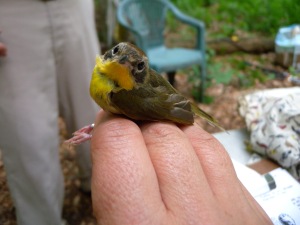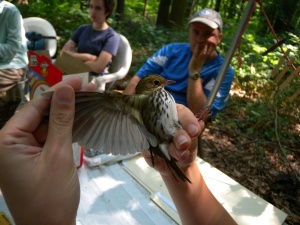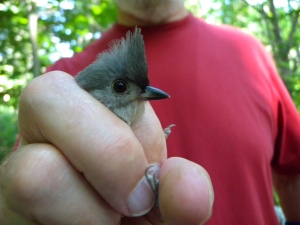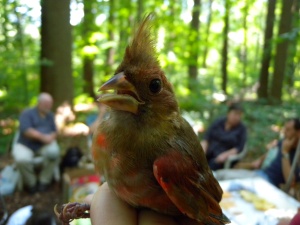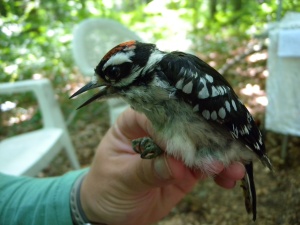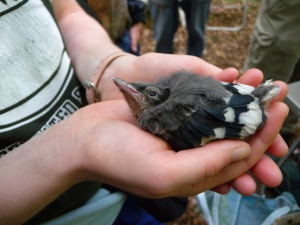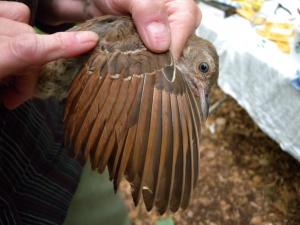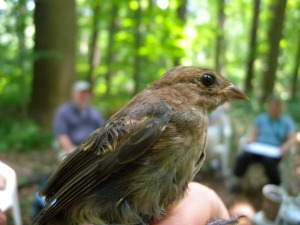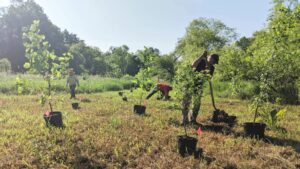
WAIT! If you’re a subscriber reading this in email format, before reading any further, please click on the title of the post right above in order to view the blog in the glory it was meant to have on the actual blog website.
______________________________________________________
Tonight while you lay in bed before falling into the arms of Morpheus, picture an unrelenting stream of thousands of tiny wings beating feverishly in the moonlight, flowing steadily northward with thousands of wild eyes and hearts set on the stars and mysterious Earth forces to which we could only dream of being attuned. Migration is now on, full speed ahead, and our nets are finally averaging 40 birds a day as of this week, which is much more satisfying than the 10-bird days we were having previously this spring. Better come see the rainbow before it disappears!
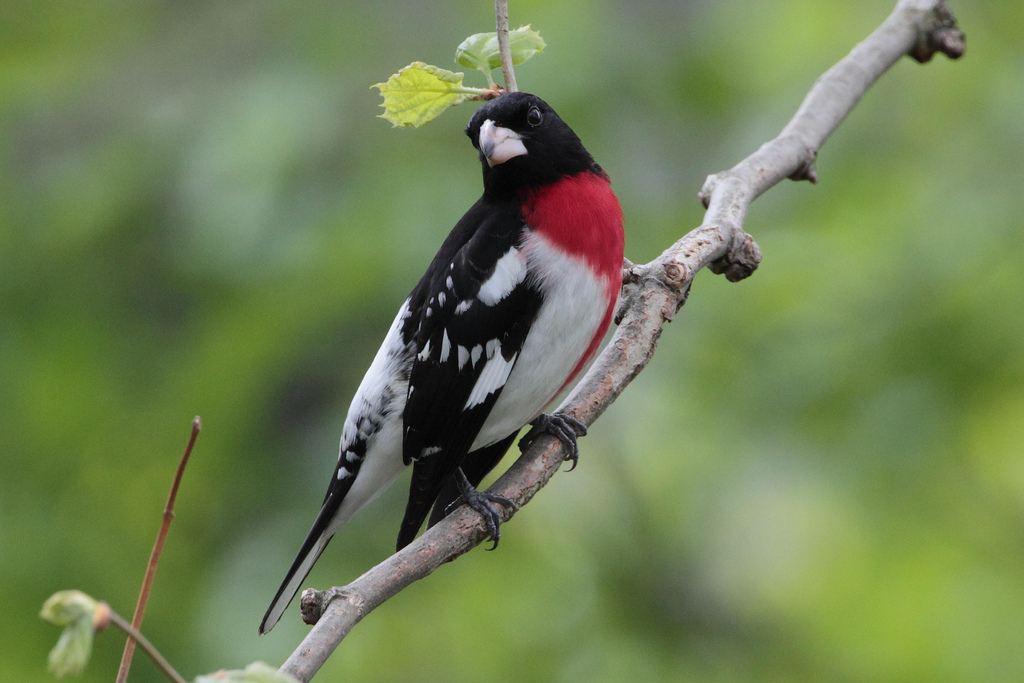
Banding Schedule
Our last bird banding days for this spring are tomorrow May 16, Saturday May 18 and next Tuesday May 21. Visit anytime between the hours of 6am and 11am. Rushton Woods Preserve and Farm is located just across the street from 912 Delchester Road in Newtown Square, PA.
Before you come, check out this cool Birdcast website for the regional migration forecast. It uses new computer models to determine real-time migration intensity in our area and where fallouts are possible on any given day during migration.

Family Day Open House This Saturday May 18
- Bird banding- Observe and learn about the premier scientific process for studying bird populations.
- Insect Exploration- Catch and identify bugs with nets, bug boxes and field guides.
- Bird Art – Draw birds with colored pencils and learn artistic techniques.
- Birding- Bring your own binoculars if you have them, but some will be available to borrow. Learn from experienced birders!
- Beauty in the Brambles- Discover the importance of shrub habitat for baby birds, see our demonstration shrub habitat, and create shrub leaf prints to take home!

Willistown Conservation Trust’s Youth Birding Program Honored By Delaware Valley Ornithological Club (DVOC)
Great news! This spring, we were awarded the annual Conservation Fund by DVOC, one of the oldest and most prestigious birding clubs in the nation. Most of these funds are raised as part of DVOC’s participation in NJ Audubon’s World Series of Birding, but other donations towards this award come from people like YOU who care about building the next generation of conservationists by getting youth outside learning about birds, science and nature. Please consider contributing to the Trust’s life-changing youth educational programs by clicking here for DVOC’s Conservation Fund donation form. Every little bit helps us connect more kids to nature.

Rushton Spring Migration at a Glance
The number of birds we are banding is just now starting to catch up to the number of young students we have been serving this spring! School groups who have come to learn about the science of bird banding, see our feathered beauties up close and understand the importance of land conservation have included: Agnes Irwin 2nd grade, Goshen Friends Elementary, Saint James School of Philadelphia, Westtown-Thornbury 2nd grade, Westtown 1st grade, and Harriton High School.


As for birds, this week we were thrilled to have spectacular Magnolia Warblers, Canada Warblers, Black-and-white Warblers, a breeding Yellow Warbler, and Wood Thrush join our bread and butter catch of Song Sparrow, Gray Catbirds, White-throated Sparrows, Veery, Common Yellowthroats, Ovenbirds and House Wrens.
Other banding highlights so far these past few weeks have included a Prairie Warbler, a White-eyed Vireo, a couple of Hermit Thrush, generous servings of Field and Swamp Sparrows, Eastern Towhee and a few Yellow-rumped Warblers.
The here-to-stay Indigo Buntings’ bright emphatic songs and Orchard and Baltimore Orioles’ flamboyant whistles monopolize the air at Rushton now so that we must strain our ears to hear the songs of the other migrants including Northern Parula, Black-throated Green Warblers, Kentucky Warbler, Blue-gray Gnatcatchers, Blue-winged warblers, Red-eyed Vireos, Warbling Vireos, Swainson’s Thrush and even a Prothonotary Warbler deep in the riparian woodland. However, all of these tricky songsters have evaded our nets so far this season.
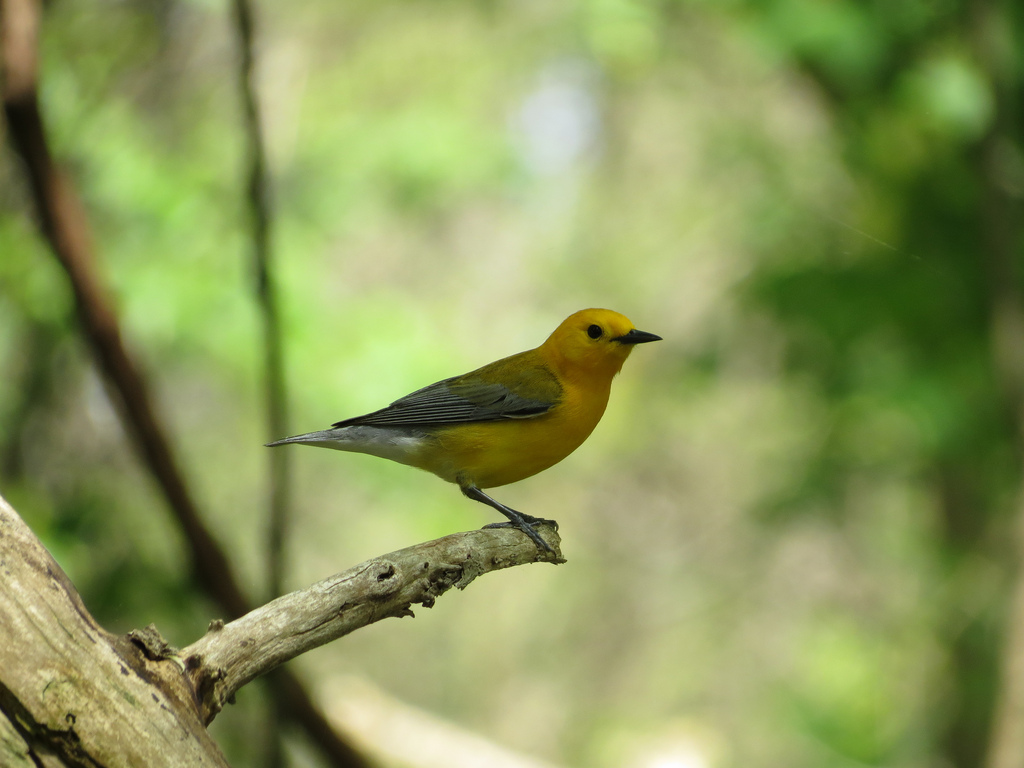
I’ll let these pictures do the rest of the talking so I can start thinking about heading to bed. The 4:30am rise time comes awfully soon, even for us banders who live for the spellbinding migratory procession of moonlit wings and golden feathers…It’s the stuff of dreams.









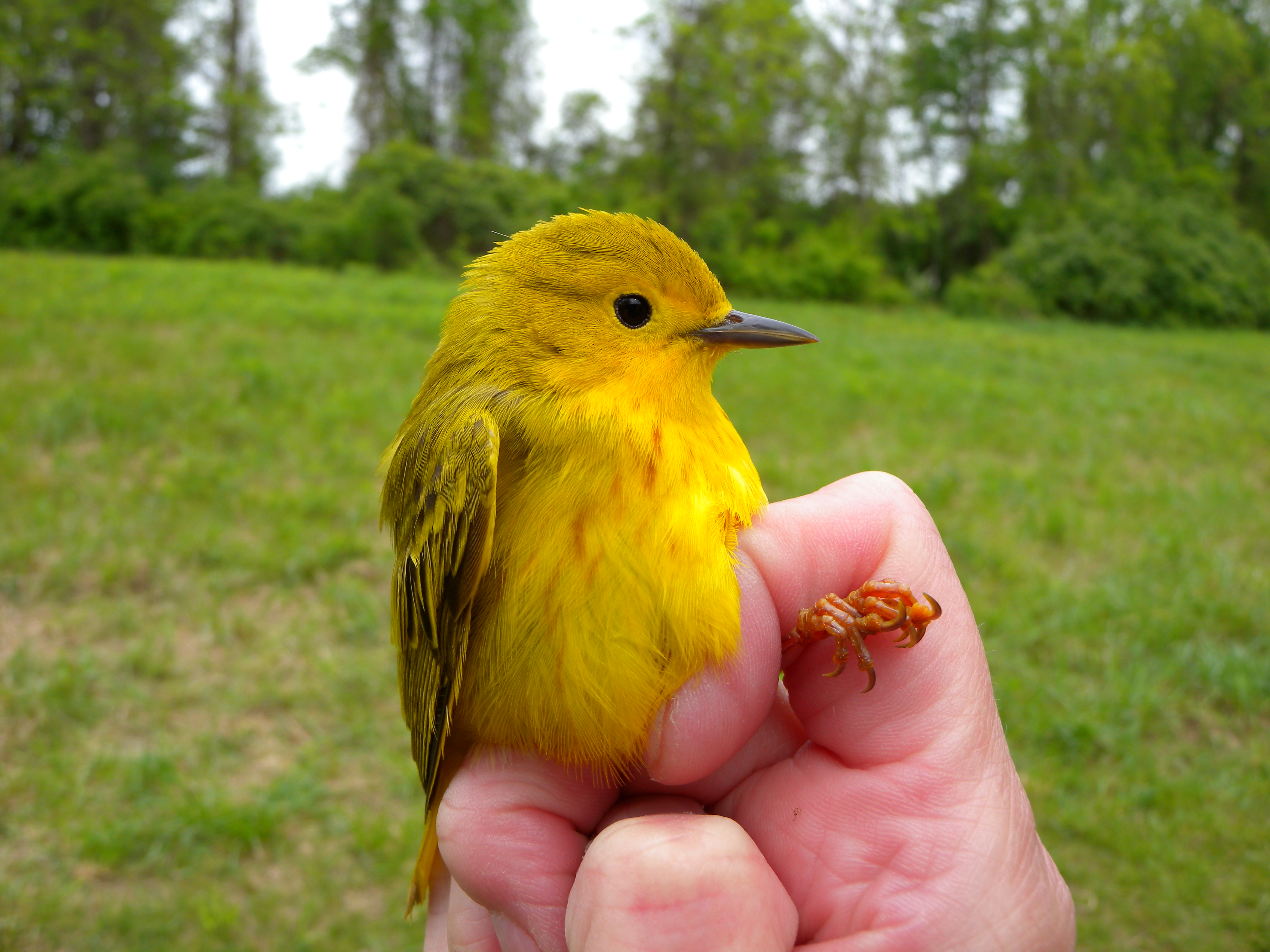


There’s a lot going on in the woods,
Blake








